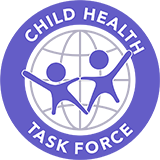Over the past three decades, significant progress has been made in child health around the world. Between 1990 and 2015, the mortality rate for children under five declined by 53%1. In addition, sixty-two countries achieved the fourth Millennium Development Goal of reducing child mortality by two-thirds. Despite these successes, considerable preventable deaths still occur, and health disparities exist, particularly in Sub-Saharan Africa. Greater attention is still needed on child health to address the unfinished agenda as well as ensuring all children thrive and reach their full potential.
In 2015, the United States Agency for International Development (USAID) commissioned a mapping of global child health leadership to better understand the evolution of child health since the year 2000, the network of global stakeholders and leaders, and implications for its future investments in child health.3 This landscaping exercise recommended the global child health community strengthen leadership, reframe child health to be more inclusive, and reposition it to improve outcomes. Findings also emphasized that country leadership must be at the center, leading the future child health agenda; and that the study effort go further to document country perspectives on these same issues.
To complement the global findings with country voice, the USAID Coordinating and Implementing Research to Communicate Learning and Evidence (CIRCLE) project conducted the Child Health Country Perspectives Study. The objectives of the study were to: understand how leadership, organizational networks, and political commitment affected progress in child health; identify constraints and enablers of national progress; and determine how these and other contributors to change might advance child health going forward in Mozambique, Tanzania, and Uganda.
This cross-country report provides an overview of the three case studies conducted as part of the Child Health Country Perspectives Study. It summarizes similarities and contrasts from the findings and provides overarching conclusions and recommendations. The individual reports provide detailed analyses for each country. The findings are intended to inform investment, policy, and programmatic decisions for each country as well as enhance stakeholder collaboration to improve child health outcomes.
